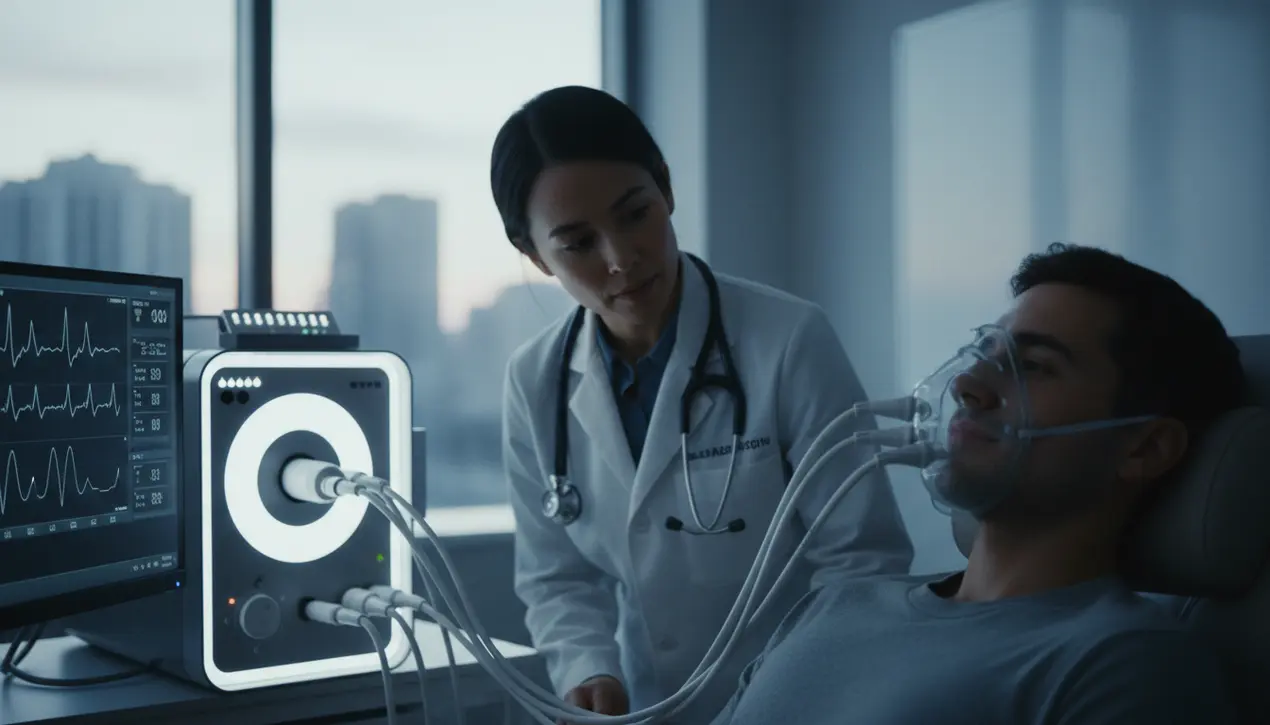
Scienceneuroscience
Oxygen Deprivation Shows Promise as Depression Treatment.
KE
Kevin White
17 hours ago7 min read2 comments
In a development that reads like a plot point from a sci-fi medical thriller, Chinese scientists are pioneering a radical new frontier in psychiatry: using brief, controlled bouts of oxygen deprivation to combat severe depression. This isn't dystopian fiction, however, but a rigorously studied intervention known as acute intermittent hypoxia (AIH), and its early results are staggering, showing a therapeutic punch on par with heavyweights like electroconvulsive therapy (ECT) and ketamine.The fundamental premise is as elegant as it is counterintuitive. By subjecting patients to short, safe periods of reduced oxygen—a carefully calibrated 'suffocation lite'—researchers are essentially hacking the brain's innate survival mechanisms.The temporary oxygen drop acts as a biological trigger, activating a cascade of neurochemical events. Central to this process is the release of adenosine, a naturally occurring compound often dubbed the brain's 'brake pedal.' In the context of mood disorders, this is a profoundly good thing. Depression is increasingly understood not just as a chemical imbalance but as a disorder of neural circuitry, where key regions like the prefrontal cortex (governing executive function and mood regulation) and the hippocampus (central to memory and emotion) can show atrophy and reduced connectivity.Chronic stress and inflammation can literally shrink these areas. Adenosine, when mobilized by AIH, appears to step in as a master regulator.It doesn't just calm overexcited neurons; it promotes neuroplasticity—the brain's remarkable ability to rewire and heal itself. Think of it as triggering a system-wide software update that repairs corrupted files and strengthens weak network connections, fostering the growth of new synapses and potentially reversing the structural damage wrought by prolonged depressive illness.This places AIH firmly within the vanguard of 'next-gen' biological psychiatry, which is moving beyond simply flooding the system with pharmaceuticals and toward precisely modulating the brain's own repair toolkit. The comparison to ECT and ketamine is not made lightly.ECT, while highly effective, carries a stigma and risk of memory side effects that make it a treatment of last resort for many. Ketamine offers rapid relief but its effects can be transient, and its potential for abuse requires careful clinical management.AIH, if these preliminary findings hold, could offer a similarly powerful, rapid-onset benefit without the same baggage, acting as a physiological reset rather than a chemical sledgehammer. The implications are vast.We're looking at a potential paradigm shift from a model of chronic medication management to one of acute, targeted neuro-rehabilitation. The next steps will involve larger, multi-center trials to solidify efficacy and long-term safety data.Key questions remain: What is the optimal 'dosing' of hypoxia? How does patient genetics or subtype of depression influence response? Could this therapy be combined with others for a synergistic effect? Furthermore, the research opens a fascinating new chapter in our understanding of hormesis—the concept that a mild, controlled stressor can trigger a beneficial, overcompensating response in an organism. From this perspective, AIH is akin to how exercise tears muscle fibers to build them back stronger.This isn't merely a new drug; it's a new principle of treatment. As we stand at the confluence of neuroscience, biotech, and clinical medicine, acute intermittent hypoxia represents more than just another tool—it symbolizes a future where we treat the brain not as a static organ to be medicated, but as a dynamic, plastic system that we can learn to reboot and repair from within.
#featured
#depression treatment
#acute intermittent hypoxia
#neuroscience
#mental health
#research breakthrough
#Chinese study
Stay Informed. Act Smarter.
Get weekly highlights, major headlines, and expert insights — then put your knowledge to work in our live prediction markets.
Related News
Comments
Loading comments...
© 2025 Outpoll Service LTD. All rights reserved.